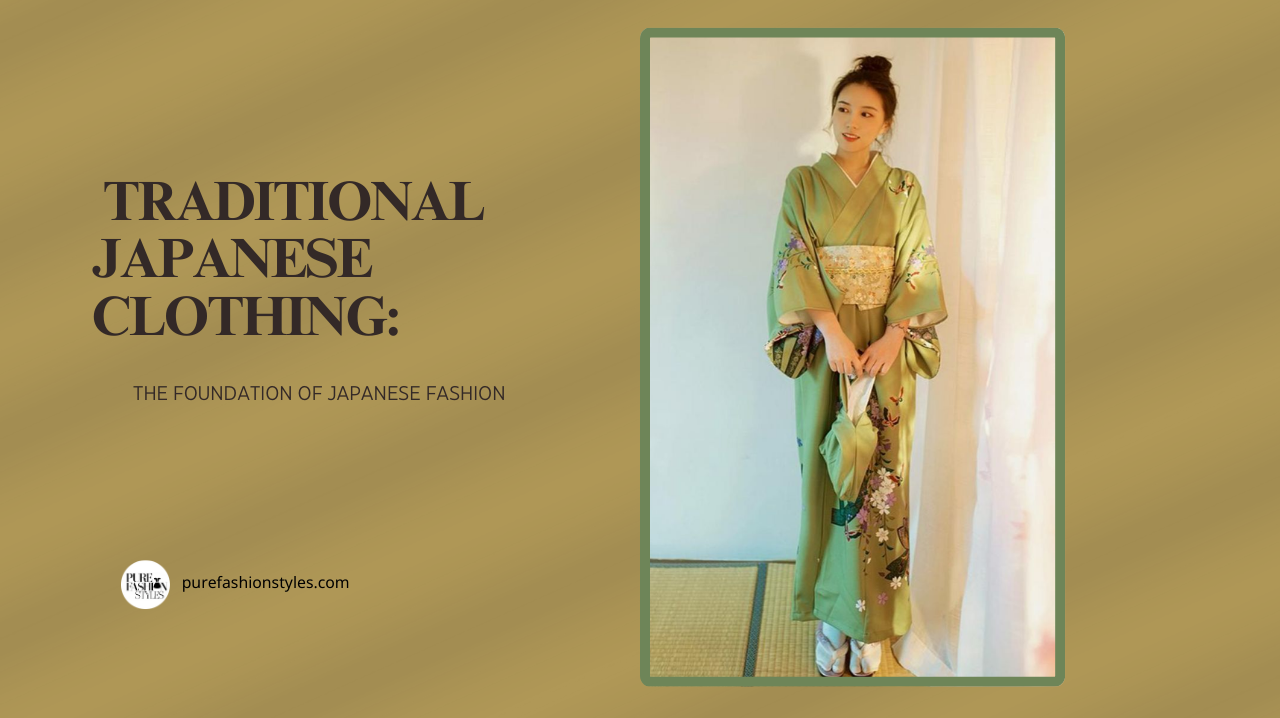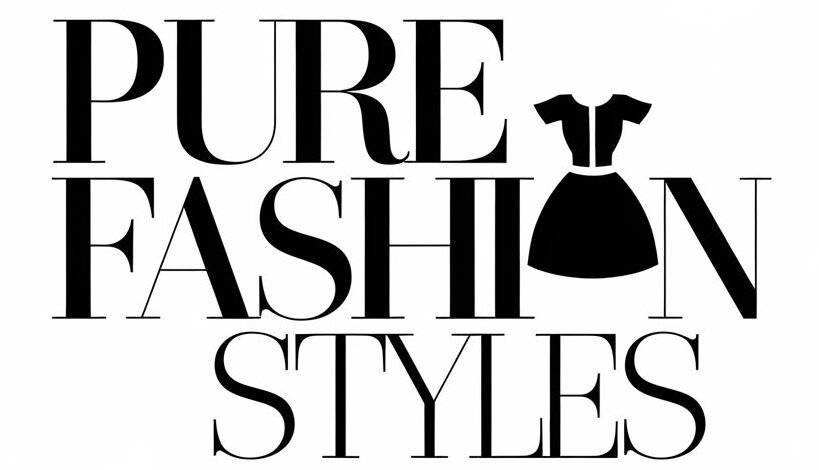A Complete Guide to Japanese Fashion Styles: From Traditional to rendy

Introduction
Have you ever scrolled through Instagram or TikTok and thought, “Wow, how do Japanese people pull off those amazing outfits?” Well, you’re not alone. Japanese fashion is bold, creative, and unique — it mixes tradition with innovation in ways you don’t see anywhere else. Whether it’s the timeless beauty of a kimono, the colorful chaos of Harajuku fashion, or the elegant layers of Mori Kei, there’s something in Japanese fashion for everyone.
In this guide, we’re going to explore everything from traditional Japanese clothing to modern street styles, and even give you tips on how to add a little Japanese flair to your wardrobe. Ready? Let’s jump in!
1. Traditional Japanese Clothing: The Foundation of Japanese Fashion

Before all the wild street looks and influencer trends, Japanese fashion was rooted in tradition. These traditional garments aren’t just historical — they still inspire today’s fashion scene.
Also read: Are Chains Acceptable Fashion in Japan? A Stylish Guide to Trends & Tips
Kimono: The Timeless Symbol of Japan

When people think of Japan, the kimono is usually the first thing that comes to mind. It’s a long, flowing robe with wide sleeves, wrapped around the body and tied with an obi (a decorative belt). Fun fact: there are different types of kimonos for different occasions! For example, a furisode with long sleeves is worn by young, unmarried women at formal events, while a tomesode with shorter sleeves is worn by married women.
Wearing a kimono isn’t just about looking pretty — it’s packed with meaning. The patterns, colors, and even how you tie it can show your age, status, or the season. Today, people still wear kimonos at weddings, tea ceremonies, and festivals.
Fashion tip: Want a touch of kimono in your style? Try a jacket or dress made from vintage kimono fabric — they’re unique and sustainable!
Yukata: The Casual Kimono

In summer, many Japanese people swap the formal kimono for a yukata. It’s lighter, simpler, and easier to wear — perfect for summer festivals and fireworks shows. Yukatas often have bright, playful prints like flowers or fireworks, and are super comfy.
2. Popular Japanese Fashion Styles

Now let’s dive into what makes Japanese fashion so exciting today! From head-turning streetwear to dreamy, doll-like looks, Japan’s fashion scene is bursting with creativity.
Harajuku Fashion: The Heart of Street Style

If you’ve ever Googled “Japanese street fashion,” you’ve probably seen Harajuku fashion. Harajuku is a district in Tokyo famous for wild, rule-breaking style. Think layers on layers, clashing prints, chunky boots, rainbow hair, and accessories galore.
What’s awesome about Harajuku fashion is that there’s no “wrong” way to dress. Everyone expresses themselves however they want. One day, someone might wear a gothic look, and the next, they’re rocking neon kawaii fashion with stuffed animal backpacks!
Style tip: Nervous about going full Harajuku? Start small with colorful socks or a statement accessory and build from there.
Lolita Fashion: A Fairytale Dream

With a Japanese twist, Lolita fashion is inspired by Victorian and Rococo styles. It’s all about frilly dresses, petticoats, lace, bows, and doll-like makeup. There are different flavors, too:
- Sweet Lolita: Pastel colors and cute motifs like cupcakes and bunnies.
- Gothic Lolita: Black dresses, crosses, and elegant lace.
- Classic Lolita: More muted tones with a vintage vibe.
Fun fact: Lolita fashion isn’t about dressing sexy — it’s about elegance, cuteness, and fantasy.
Gyaru Fashion: Glam Meets Rebel

In the 90s and 2000s, gyaru fashion (which literally means “gal fashion”) was everywhere. Gyaru girls rocked tanned skin, dramatic eye makeup, bleach-blonde hair, mini skirts, platform boots, and flashy accessories. It’s bold, rebellious, and super glam.
Though gyaru isn’t as popular as it used to be, it still has a loyal fan base and influences modern trends.
Kawaii Fashion: Cute Overload
“Kawaii” means “cute” in Japanese, and kawaii fashion takes that idea to the max. Think pastel colors, oversized bows, cartoon prints, plush toys as bags, and anything that sparks joy. It’s playful, fun, and makes you smile just looking at it!
Style tip: Want to add kawaii fashion to your closet? Start with a pastel hoodie or a cute hair clip.
Visual Kei: Rock Star Vibes
If you love edgy, dramatic looks, you’ll love Visual Kei. Inspired by Japanese rock bands, this style mixes wild hair, heavy makeup, leather, spikes, and gothic details. It’s theatrical and gender-bending, perfect for anyone who loves a bold statement.
Mori Kei & Fairy Kei: Whimsical Styles
- Mori Kei (“forest style”) looks like you stepped out of a fairytale forest: earthy colors, layers of flowy fabrics, cozy knits.
- Fairy Kei is all about pastel colors, 80s toys, and magical girl vibes. Think lavender tutus, unicorn prints, and fluffy legwarmers.
3. Lesser-Known Japanese Fashion Subcultures

Beyond the big names, Japan’s fashion scene is filled with niche subcultures. Here are a few you might not know:
Onii-Kei: Cool Big Brother Style

Onii-kei is like the “cool older brother” look — slim jeans, leather jackets, dress shirts, stylish sneakers. It’s casual but polished, perfect for a night out or a low-key date.
Bōsōzoku Style: Rebel Biker Vibes
Bōsōzoku fashion comes from Japan’s biker gangs. Picture embroidered jackets, baggy pants tucked into boots, and bandanas. It’s tough, rebellious, and full of attitude.
Shibuya Style: Trendy Urban Fashion
While Harajuku is playful and quirky, Shibuya fashion is sleek and trendy. This style mixes designer pieces with casual wear — think statement sneakers, designer bags, ripped jeans, and oversized blazers.
E-Girl and E-Boy Fashion: Internet-Influenced
Thanks to TikTok and Instagram, E-girl and E-boy fashion blends Japanese street style with global trends. Black eyeliner, striped shirts, chains, dyed hair, and baggy pants make up this digital-age look.
4. Current Japanese Fashion Trends for 2025
Japanese fashion never stands still — here’s what’s hot right now:
Sustainability Matters
Japanese brands are focusing on eco-friendly materials, recycling fabrics, and ethical production. Vintage and thrift fashion are growing, too.
High-Tech Fashion
From jackets with built-in fans to LED accessories, Japanese fashion loves blending tech with style.
Streetwear Dominance
Big names like A Bathing Ape and Comme des Garçons continue leading the Japanese street fashion scene, with oversized hoodies, chunky sneakers, and logo prints still trending.
5. Japanese Fashion Icons and Influencers

These fashion leaders are shaping the global view of Japanese fashion:
- Rei Kawakubo: Founder of Comme des Garçons, famous for avant-garde designs.
- Yohji Yamamoto: Master of black, draping, and minimalist cool.
- Rola: Model and influencer blending Japanese and Western styles.
- Haruka Kurebayashi: A Harajuku fashion queen known for bold decor fashion.
Social media plays a big role in spreading their influence worldwide.
6. Where to Shop for Japanese Fashion

Want to shop authentic Japanese fashion? Here’s where to look:
- Online: Try YesStyle, Rakuten, Tokyo Otaku Mode for international shipping.
- Tokyo Hotspots: Visit Takeshita Street (Harajuku), Shibuya 109, and Shimokitazawa for unique finds.
- Designer Boutiques: Explore Comme des Garçons, Yohji Yamamoto, and Issey Miyake stores.
7. How to Add Japanese Fashion to Your Wardrobe
You don’t need to live in Tokyo to enjoy Japanese fashion! Try these easy ideas:
- Add one bold accessory, like a printed scarf or fun socks.
- Layer a dress over a shirt or a jacket over a hoodie.
- Mix textures (denim, lace, satin) for a Japanese street style vibe.
Personal tip: I love adding quirky pins to my bag or denim jacket — it’s an easy way to sprinkle some Japanese fashion magic into any outfit!
FAQS
What is the Japanese fashion style called?
Japanese fashion includes many unique styles, but some of the most well-known are Harajuku fashion, Lolita, Gyaru, Visual Kei, and traditional styles like the kimono. Overall, the term “Japanese fashion” covers both streetwear and traditional clothing, depending on the context.
What fashion is popular in Japan?
Currently, popular fashion in Japan includes minimalist streetwear, oversized layers, techwear, vintage-inspired looks, and gender-neutral outfits. Styles like Harajuku, Shibuya trend, and kawaii fashion still thrive, especially among younger people.
What is 90s alt Japanese fashion?
90s alt Japanese fashion refers to alternative subcultures from the 1990s, like Gyaru, Visual Kei, Decora, and early Harajuku street fashion. These styles were bold, rebellious, and expressive, often featuring flashy colors, dramatic makeup, and unique accessories.
How to dress casually in Japan?
To dress casually in Japan, go for neat, clean, and simple outfits. Popular casual choices include jeans, T-shirts, blouses, cardigans, sneakers, and loafers. Layers are common, and people often avoid super flashy or overly revealing clothes in everyday settings.
Conclusion
At its heart, Japanese fashion is all about creativity, self-expression, and mixing the unexpected. From the elegance of a kimono to the wild layers of Harajuku fashion, there’s a style for every personality. Don’t be afraid to experiment, mix styles, or try something different — because in Japanese fashion, there are no rules, only fun.

